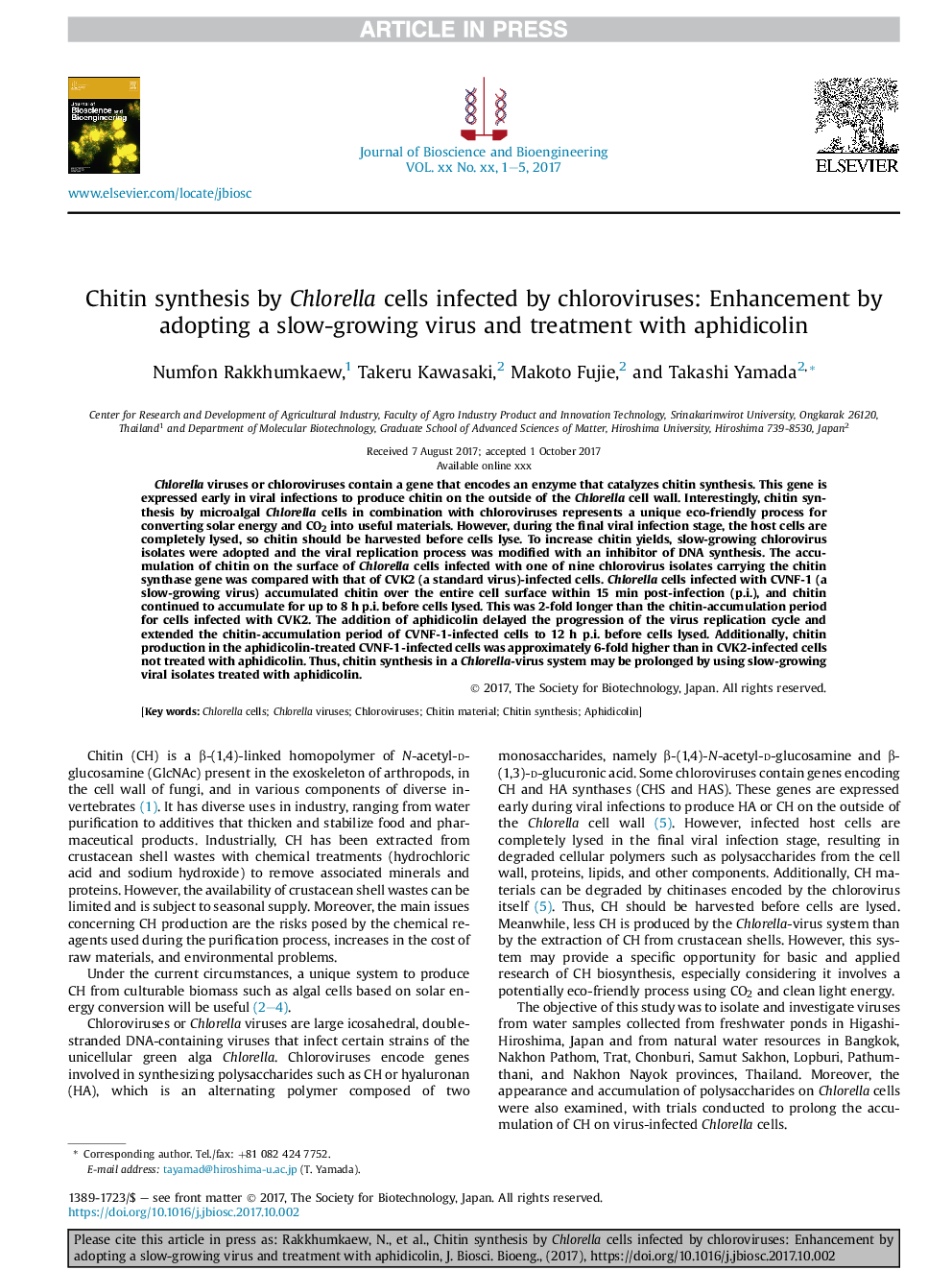| Article ID | Journal | Published Year | Pages | File Type |
|---|---|---|---|---|
| 6489933 | Journal of Bioscience and Bioengineering | 2018 | 5 Pages |
Abstract
Chlorella viruses or chloroviruses contain a gene that encodes an enzyme that catalyzes chitin synthesis. This gene is expressed early in viral infections to produce chitin on the outside of the Chlorella cell wall. Interestingly, chitin synthesis by microalgal Chlorella cells in combination with chloroviruses represents a unique eco-friendly process for converting solar energy and CO2 into useful materials. However, during the final viral infection stage, the host cells are completely lysed, so chitin should be harvested before cells lyse. To increase chitin yields, slow-growing chlorovirus isolates were adopted and the viral replication process was modified with an inhibitor of DNA synthesis. The accumulation of chitin on the surface of Chlorella cells infected with one of nine chlorovirus isolates carrying the chitin synthase gene was compared with that of CVK2 (a standard virus)-infected cells. Chlorella cells infected with CVNF-1 (a slow-growing virus) accumulated chitin over the entire cell surface within 15Â min post-infection (p.i.), and chitin continued to accumulate for up to 8Â h p.i. before cells lysed. This was 2-fold longer than the chitin-accumulation period for cells infected with CVK2. The addition of aphidicolin delayed the progression of the virus replication cycle and extended the chitin-accumulation period of CVNF-1-infected cells to 12Â h p.i. before cells lysed. Additionally, chitin production in the aphidicolin-treated CVNF-1-infected cells was approximately 6-fold higher than in CVK2-infected cells not treated with aphidicolin. Thus, chitin synthesis in a Chlorella-virus system may be prolonged by using slow-growing viral isolates treated with aphidicolin.
Related Topics
Physical Sciences and Engineering
Chemical Engineering
Bioengineering
Authors
Numfon Rakkhumkaew, Takeru Kawasaki, Makoto Fujie, Takashi Yamada,
